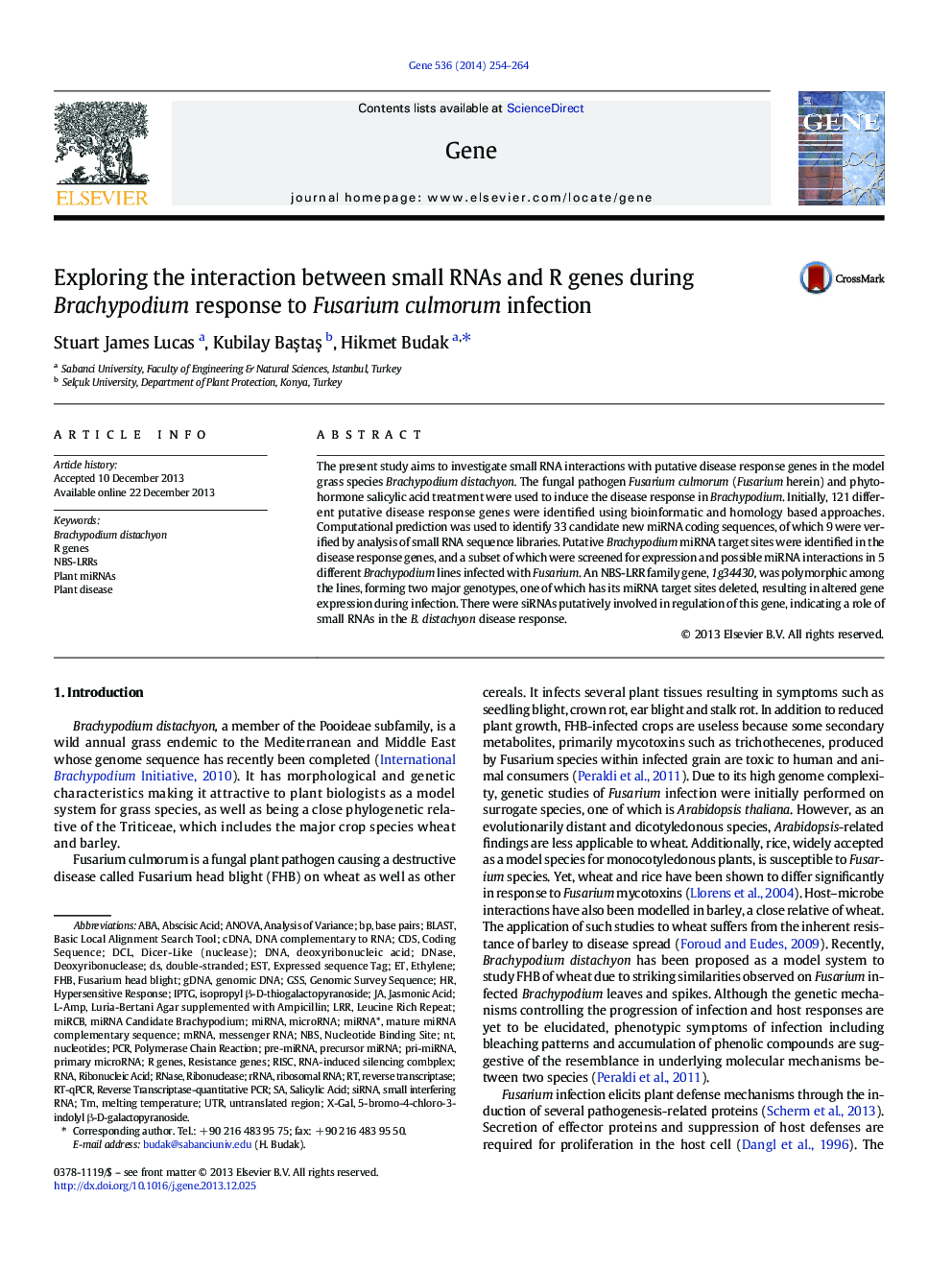| Article ID | Journal | Published Year | Pages | File Type |
|---|---|---|---|---|
| 5905861 | Gene | 2014 | 11 Pages |
Abstract
The present study aims to investigate small RNA interactions with putative disease response genes in the model grass species Brachypodium distachyon. The fungal pathogen Fusarium culmorum (Fusarium herein) and phytohormone salicylic acid treatment were used to induce the disease response in Brachypodium. Initially, 121 different putative disease response genes were identified using bioinformatic and homology based approaches. Computational prediction was used to identify 33 candidate new miRNA coding sequences, of which 9 were verified by analysis of small RNA sequence libraries. Putative Brachypodium miRNA target sites were identified in the disease response genes, and a subset of which were screened for expression and possible miRNA interactions in 5 different Brachypodium lines infected with Fusarium. An NBS-LRR family gene, 1g34430, was polymorphic among the lines, forming two major genotypes, one of which has its miRNA target sites deleted, resulting in altered gene expression during infection. There were siRNAs putatively involved in regulation of this gene, indicating a role of small RNAs in the B. distachyon disease response.
Keywords
primary microRNAIPTGRT-qPCRdeoxyribonucleaseGSSNBSX-GalDCLpri-miRNAFHBLRRmiRNA*RNaseBrachypodium distachyonR genesprecursor miRNArRNA5-bromo-4-chloro-3-indolyl β-d-galactopyranosideABAgDNAmRNAcDNADNA complementary to RNAgenomic DNADNADNAsemessenger RNARibosomal RNASmall interfering RNAsiRNABLAST, basic local alignment search toolEthyleneESTdeoxyribonucleic acidabscisic acidjasmonic acidRNAribonucleic acidSalicylic acidBlastisopropyl β-D-thiogalactopyranosidePlant diseaseanalysis of varianceANOVAReverse transcriptasecoding sequenceExpressed Sequence TagLeucine rich repeatbase pairsRISCMelting Temperaturedouble-strandedribonucleasenucleotide binding siteFusarium head blightUTR یا untranslated regions untranslated regionMicroRNAMiRNANucleotidespolymerase chain reactionPCRHypersensitive responsepre-miRNAResistance genesCdS
Related Topics
Life Sciences
Biochemistry, Genetics and Molecular Biology
Genetics
Authors
Stuart James Lucas, Kubilay BaÅtaÅ, Hikmet Budak,
